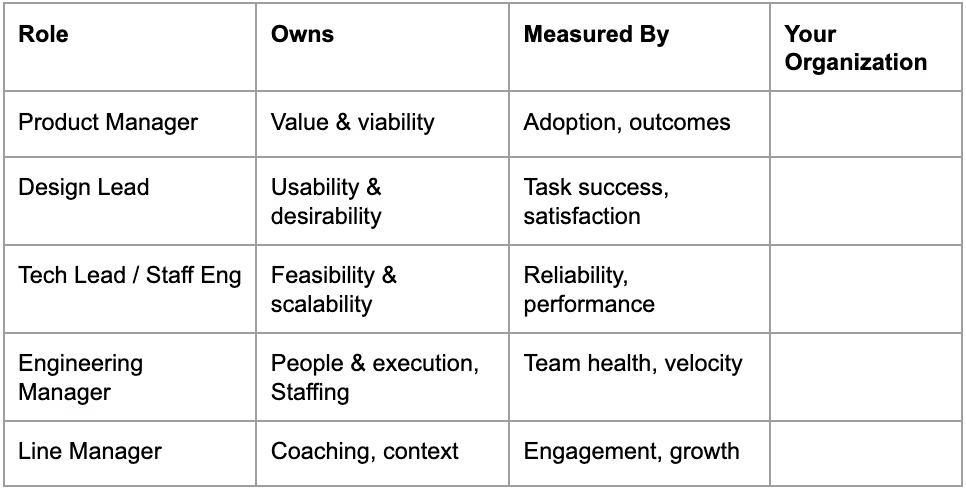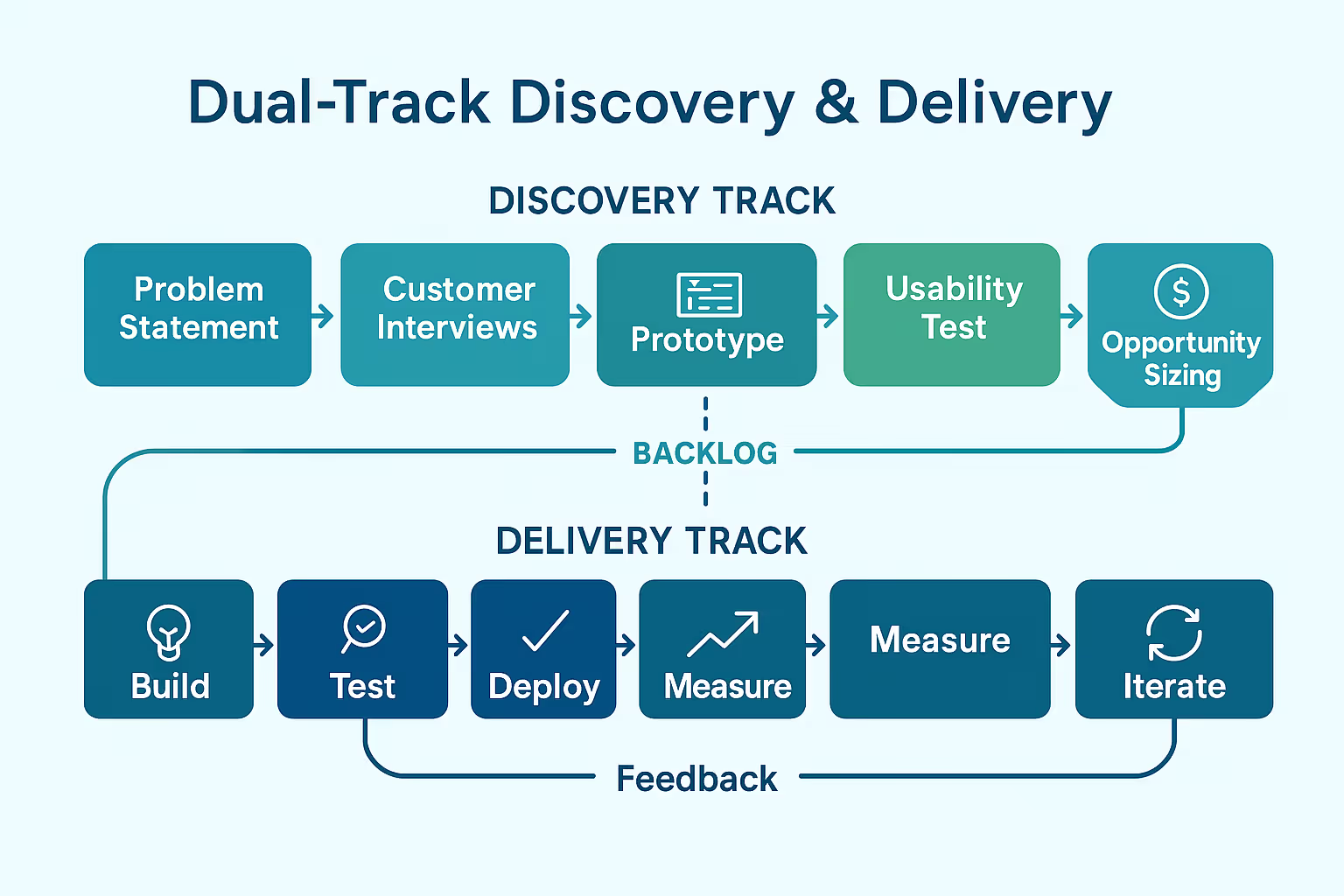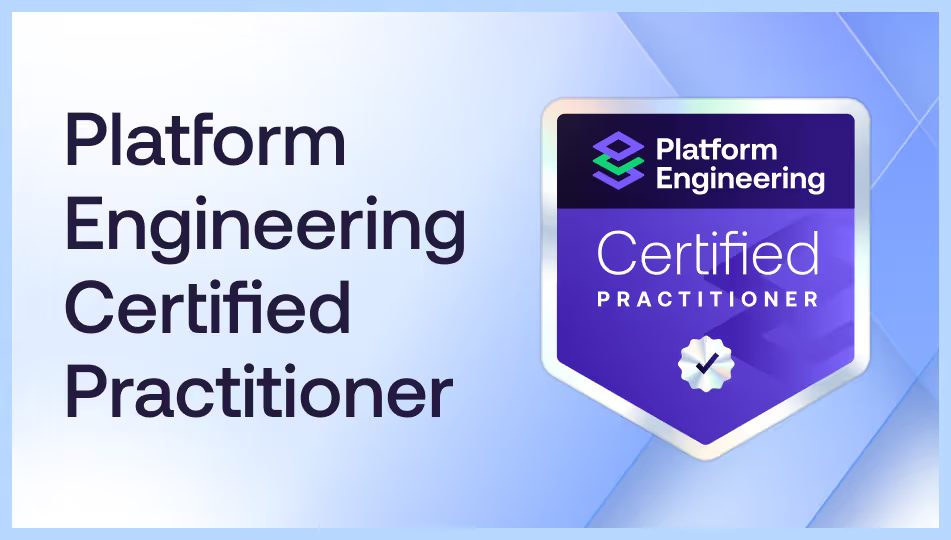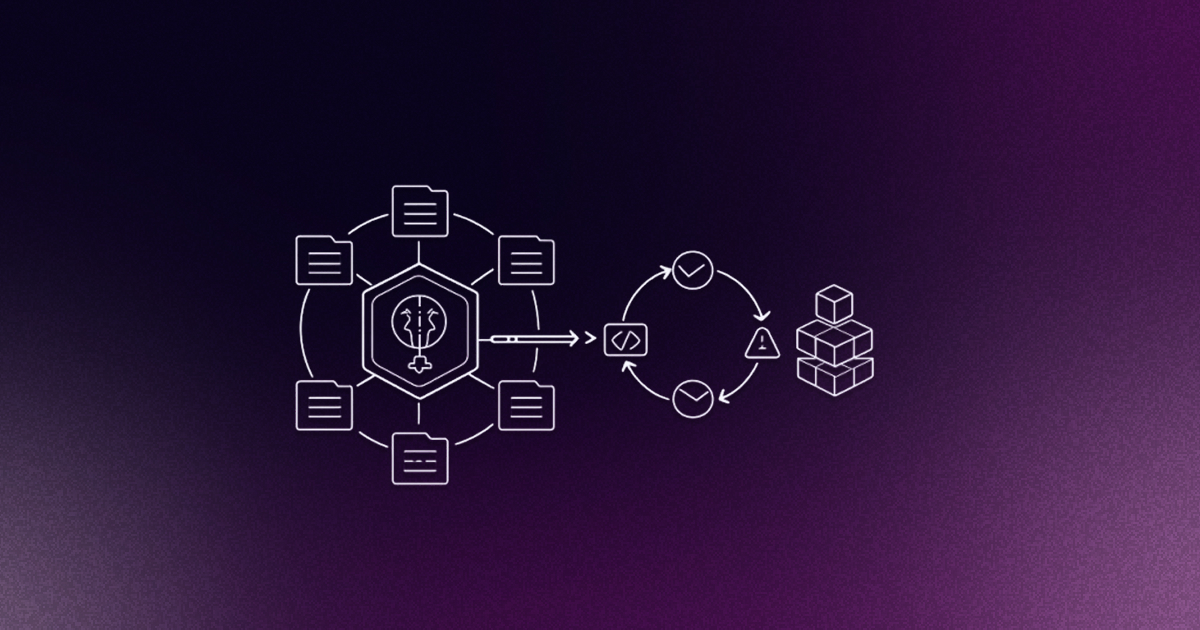A key component of getting a successful platform engineering initiative off the ground is establishing the right team culture and environment for a product-oriented model to flourish. In this blog post, we’ll focus on “The How” to get this implemented. For the purposes of this guide, we’ll rely on well-understood and mainstream industry frameworks like Agile (but not its SAFe variant), The Product Operating Model and Objectives and Key Results (OKR).
Communicating “the why”
It’s vital to communicate the motivation behind changing how a team works and operates from the very beginning of this cultural transformation.
More often than not, platform teams are not even aware there is an opportunity to get closer to their customers and are more than happy to keep doing what they have been doing. Groups that stay in a project mindset fixate on tickets closed as opposed to friction removed. The result at the organizational level is slow delivery, disengaged product-side engineers, and developer “customers” who bypass the platform to unblock themselves. In order to make progress, it’s important to stress engineer empathy and humility as core traits and behaviors.
Moving to a product mindset reframes success in terms of customer outcomes, e.g. lower lead-time for GTM / MTTM initiatives, faster innovation, higher reliability, lower cost, better security posture, faster onboarding, and lower cognitive load.
Before we dive in, it’s important to introduce some concepts.
What is the Product Operating Model (POM)?
Simply put, the POM is a system for consistently solving customer problems in ways that meet business goals, anchored on empowered, cross-functional product teams that balance discovery (what and why) and delivery (how and when).
These are the core principles that guide every decision and what those mean for Platform Engineering Teams:
- Outcome over output: track lead-time to technical or business outcomes, MTTR, adoption rates, Customer Satisfaction (CSAT), not just feature velocity
- Continuous discovery: talk to customers on a weekly basis via established feedback loops and iterate on feedback fast
- Missionary leadership: leaders evangelize the vision and clear business, technical, and cultural blockers
- High autonomy, high accountability: teams own both impact and guardrail metrics
- Product-led, tech-enabled: a strong collaboration between a Product Manager (PM) / Product Owner (PO) and Engineering Manager (EM) / Tech Lead (TL) who own value, usability, feasibility. This model is usually referred to as 2-in-a-box.
The four types of risks
The POM accounts for the following risk factors that try to account for the, “Are we building the right thing?,” question before the actual work starts. In practice, those are very valuable questions to ask as a part of each platform engineering initiative or workstream.
- Value: will users choose to use the solution or product being built?
- Usability: will users be able to figure out how to use it?
- Feasibility: can the technical team build what we need with the time, skills, and technology we currently have?
- Business viability: will this solution also work for the various aspects of our business, i.e. is this a team-localized pattern vs. a general pattern affecting multiple customer archetypes
Here’s a handy chart that can help with diffusion of roles and responsibilities for each risk. Given different organizations have different cultures and working models, you may have to fill out the column on the very right with your own organizational mapping. It’s fully expected for these to not line up 1:1 with the values in the columns on the left side. Also, please note that some organizations may be blurring the line between Tech Lead / Staff Eng, Engineering Manager, and Line Manager. Please adjust accordingly.

Explicit ownership prevents the, “Who’s on first?” confusion that slows down velocity.
Operating cadence
The usual flow is as follows: Vision/North Star which is translated into a series of strategies, which is then executed against via multiple tactics, or OKRs. Pursuing KR implementation maps nicely with an Agile sprint. The key bit is to start dual-tracking discovery and delivery and parallel. At the end of each sprint iteration, teams can share demos with their customers, and stakeholders. If there isn’t content to share just yet, these sessions can be repurposed into discovery sessions, to get a better idea of customer pain points. Those are non-negotiable in terms of attendance, because platform teams must see customers struggle in order to keep developing their empathy and refine their understanding of the pain points.

Metrics that matter
As usual, choosing what to measure is a bit of an art and science.
- Example North Star: “Mean Lead Time for Change < 1 hr with a 95% success rate”
- Example supporting OKRs:
- Reduce provisioning wait time from 3 days → 30 min
- 90% developer NPS ≥ +50
- Self‑service adoption ≥ 80% of newly provided services
In the example above, the “Reduce provisioning wait time from 3 days → 30 min” is the impact metric. The other two are guardrail metrics which help a platform team understand if the solutions built are on the right track or if they are starting to veer off in a direction that will not make the end result a successful technical outcome. This type of “belt and suspenders” approach is a core dynamic which teams can leverage with great success over time.
Addressing cultural concerns
It’s completely normal for teams to have concerns. Here are some the most common ones and how to address them proactively and upfront:
Q: Isn’t ‘outcome over output’ unrealistic for platform teams?
A: It’s harder but more vital. Uptime, enabling self-service, helping reduce developer cycle time are outcomes.
Q: How do we fund discovery work?
A: Same engineering time budget that funds localized team waste today. Teams will be spending less time on building the wrong thing from a customer perspective.
Q: We don’t have designers and product managers. Now what?
A: Lean into it. Usability debt is just as straining as tech debt. Teams can also do discovery and will likely gain deeper understanding of customer pain points by talking to them
Q: How do we balance roadmap commitments with ongoing discovery?
A: Use the dual‑track approach: time‑box discovery spikes while delivery continues. Discovery de‑risks commitments as opposed to derailing them
Q: My team is buried in sustaining load burden / KTLO. When do we find time for product work?
A: Automate the top pain points first and invest 10% capacity in discovery. Reducing existing sustaining load creates the slack you need.
Q: Do OKRs replace detailed project plans?
A: OKRs set the initial outcomes and guardrails. Teams still create RFC style documents and project plans with clearly defined milestones and time tables as a part of delivery.
Finally, select a pilot team for the rollout. Ideally, you run this with a single group which is the best fit due to proximity to product teams (technology-wise and relationship-wise), and have the document of their learnings during a tightly scoped pilot. This can subsequently be turned into a playbook for rollout and scale throughout the rest of the team. While this will vary across organizations, teams that usually are a good fit are data platform practitioners, SREs, embedded DevOps groups, and/or middleware-style teams.
A sample launch playbook
This is meant for illustrative purposes only. Timescales and organizational dynamics will vary.
Run a diagnostic sprint (2 weeks)
- Map the value stream from “new repo” to “prod deploy”.
- Baseline metrics: lead-time, MTTR, time-to-first-deploy, DevEx NPS.
- Interview 15–20 engineers: ask, “What is the most painful 30 minutes of your week?”
- Craft a one-slide problem statement tied to dollars.
- Secure an executive sponsor and the air-cover to run a 30-day pilot.
Pilot (4 weeks)
- Assemble a single cross-functional team - please think “2-in-a-box” shared earlier.
- Set one outcome metric (e.g., cut scaffolding time from 2 days → 30 min).
- Ship a thin slice by Day 10: repo template + basic CI pipeline.
- Engage in weekly discovery shadowing developers (ride-along incident calls, developer shadowing) and measure time-to-first-deploy.
Value expansion (4 weeks)
- Harden the “paved road.” Add IaC modules, policy-as-code guardrails, docs, and SLAs.
- Instrument the journey with traces for every user action; publish telemetry to a Grafana dashboard.
- Open a limited beta - aim to onboard one product team per week via paired with office-hours style support.
- Operate on a dual-track cadence: bi-weekly discovery sessions, monthly demos, quarterly 360° retros with customers.
Assess (2 weeks)
- Run a pilot retrospective - what went well, what did we learn, what could we do better if we were to keep iterating on this operating model?
- Inspect outcomes - were goals achieved? How did we perform against impact and guardrail metrics?
- Include testimonials from customers - it’s important to include qualitative data for a full and complete picture. Make sure to spend some time on trust in terms of how customers feel.
- Document
If everyone involved is happy with the pilot, the first slice of a Minimum Viable Platform (MVP), you can continue funding it and consider rolling it out to other teams within the organization as a part of a scale out.
Closing thoughts
Transforming a platform organization is less about Kubernetes versions, and more about customer obsession, empathy, and outcome ownership. Follow the 90-day pilot rollout, live the operating cadence, and let the metrics and your developers tell the success story. Your platform will move from “ticket factory” to “product flywheel,” and the business will feel the acceleration.












